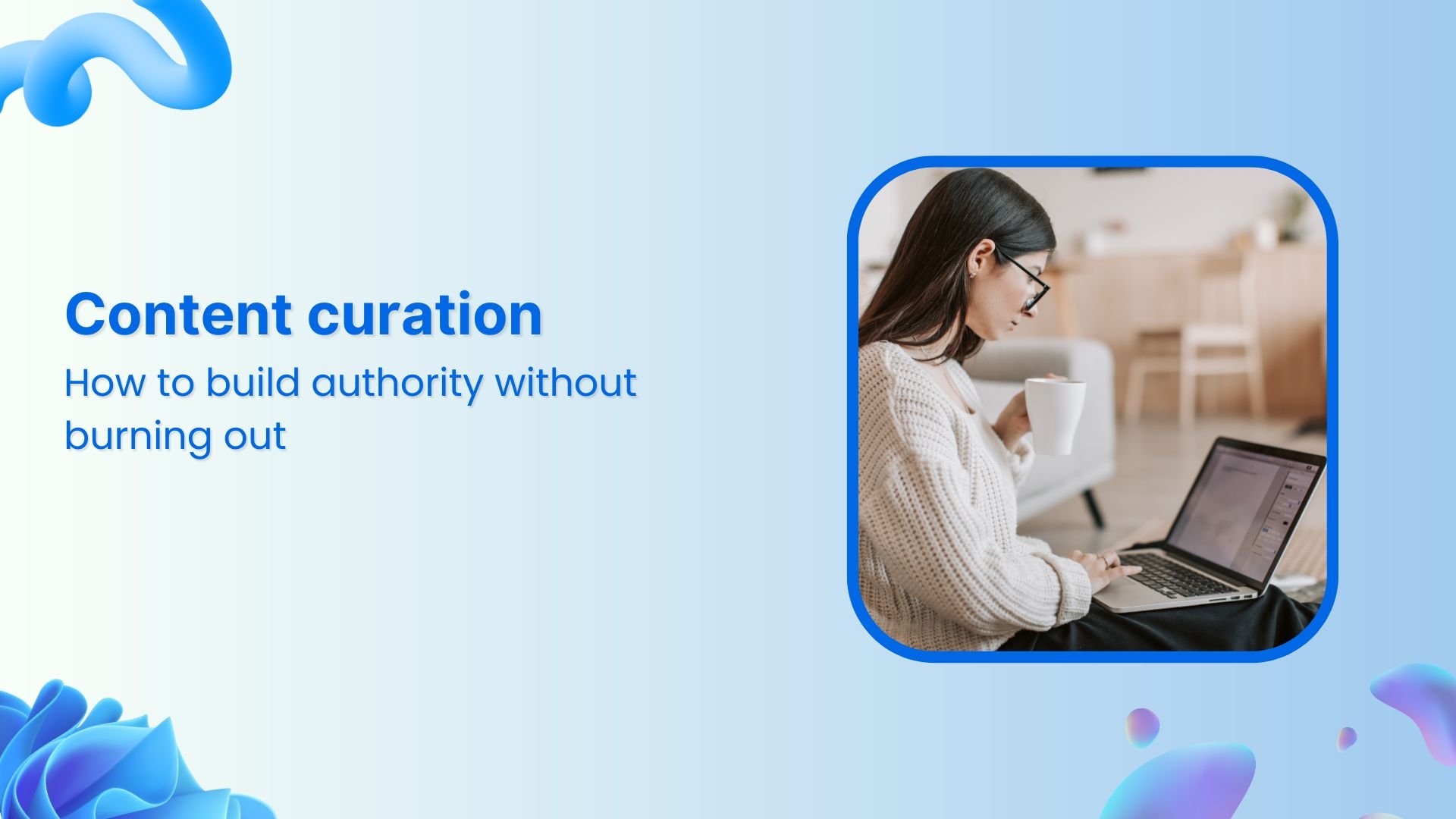Bulk-generate & schedule posts in seconds with Smart Scheduling. Try now!
How to build a comprehensive B2B content marketing strategy
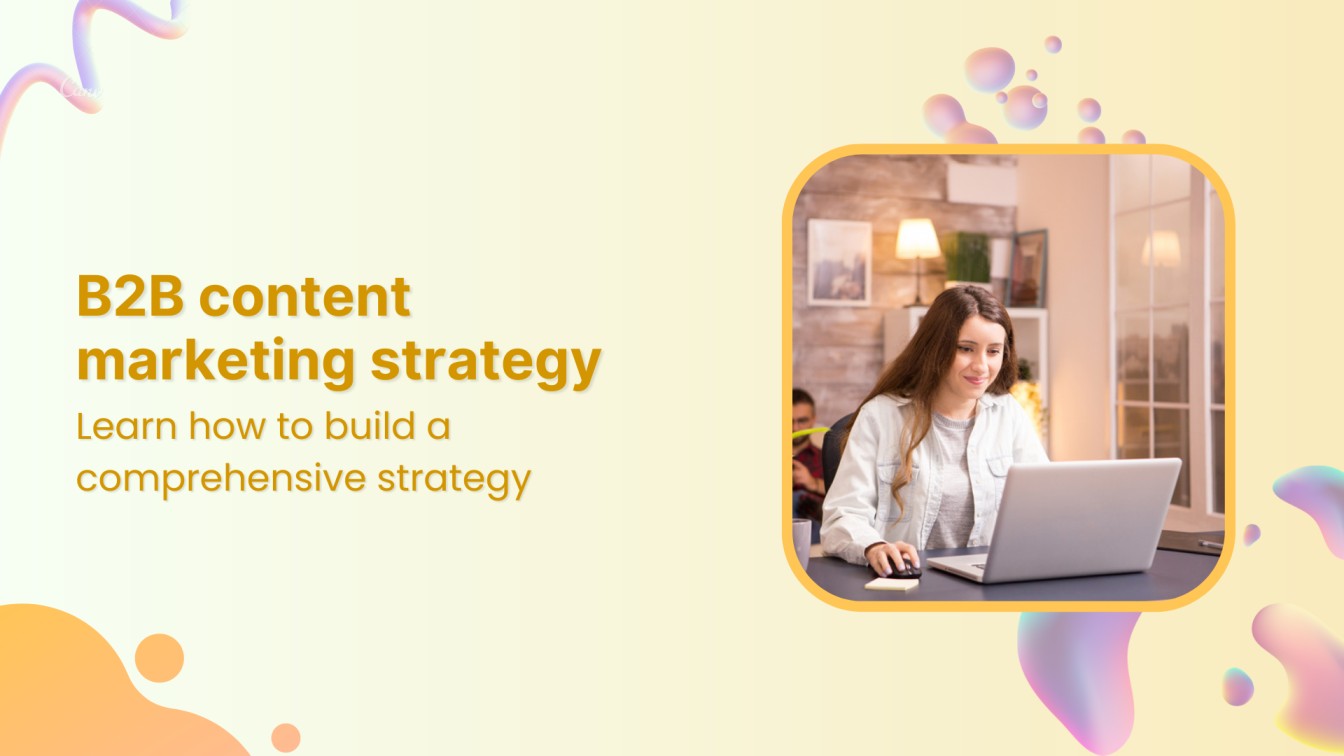
The B2B playing field has evolved. Simply offering a strong product or service is no longer enough to win customers. You need a content marketing strategy that stands out, educates potential buyers, and establishes your brand as an industry leader.
We’ll explore how to attract leads, cultivate brand loyalty, and ultimately propel your business forward through the power of targeted content. Get ready to discover how to understand your audience, craft compelling content, and leverage the perfect channels to connect with the key decision-makers you’re looking for.
So, for today, let’s explore how to create a successful B2B content marketing strategy. But first, let’s touch on some basics.
Simplified social media marketing for individuals & agencies.
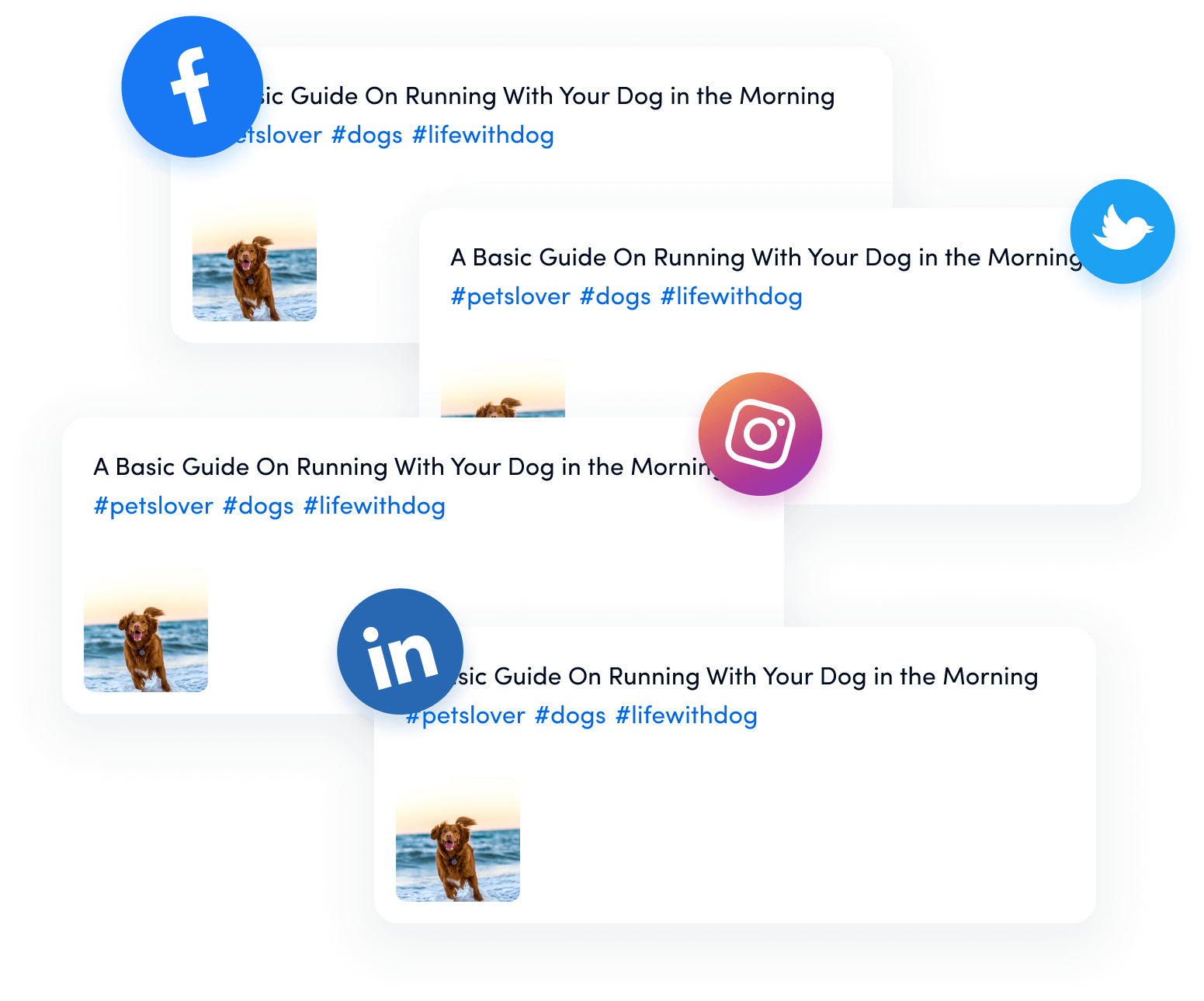
What is a content marketing strategy?
Content marketing entails creating and distributing valuable content that solves your audience’s problems.
At the outset, this may seem like a simple process involving content creation and distribution. However, there is a lot more to it than what catches the eye in the first impression.
For instance, digging into what pain points plague your audience’s life, which content format catches their attention best, and where they read content are some questions you’ll need to answer.
Considering the amount of work that goes into the process, effective content marketing delivers significantly.
What is a B2B content marketing strategy?
Using content to market your products or services to other businesses is known as business-to-business (B2B) content marketing. It entails creating excellent content that speaks to B2B customers’ main concerns and/or appeals to them.
To reach your target audience, B2B content marketing also necessitates the smart distribution of content. It complements your social media content strategy, which entails sharing images and links to draw in the appropriate audience. Other distribution channels that are part of a B2B content marketing plan include email, organic search, and paid advertisements.
What makes a B2B content marketing strategy different from a B2C strategy?
The answer lies in the audience. For a B2B content strategy, the content aims to target your audience of businesses rather than customers, as observed in a B2C strategy.
In contrast to consumers, businesses have a longer buyer’s journey, and many people depend on the buyer to make the right decision. This creates the need for engaging content that solves the buyer’s problems.
Put simply, people come to you with a list of problems, needs, and preconceptions. Unlike the B2C target audience, this audience does not easily fall for a flash sale. So, an effective B2B content marketing strategy gains trust and convinces by solving problems.
Related Read: How to Build a B2C Social Media Marketing Strategy for Your Business
Hence, every time your audience runs into a problem, your content solves it. And, the better your content solves their issue, the more trust you will gain. The more trust, the more leads you’ll generate, and so on.
Therefore, it all boils down to mapping out your audience’s pain points, questions, and where they are in their buyer’s journey so that you can create content to address all their issues.
Why is content marketing important to B2B businesses?
Content marketing aids B2B businesses in informing and educating their intended audiences. It lets you provide comprehensive information even when one-on-one conversation isn’t necessary. It’s, therefore, quite useful for demonstrating your knowledge and building authority in the industry. Two major advantages are:
- High ROI for a low-cost channel
One channel with comparatively cheap costs is content marketing. Money will be spent on labor, publishing, and content development technologies. However, such expenses pale in comparison to the possible gains. The majority of publication and distribution methods are free of charge unless you choose to invest in sponsored advertisements. Consequently, the returns on investment outweigh the investments. - Content lasts for a very long time
It’s worth the initial expenditure when you consider that content marketing pays off in the long term. Benefits may keep coming in for months or even years after content is published. This is especially true for timeless subjects that draw interest year after year.
11 best practices to build a B2B content marketing strategy
The following recommended practices might increase your chances of success when creating a content marketing strategy for your business-to-business (B2B) organization. The top practices we found for an effective content marketing plan are listed below.
1. Identify and set your content marketing goals
Defining your goals is crucial. Diving into content marketing without setting goals is like driving without direction. You’ve no idea where your ride will take you or if it will even reach a destination.
Therefore, make sure that your marketing goals align with your business goals. To give you an idea of the possible goals you can work around, here’s a chart from the Content marketing institute:
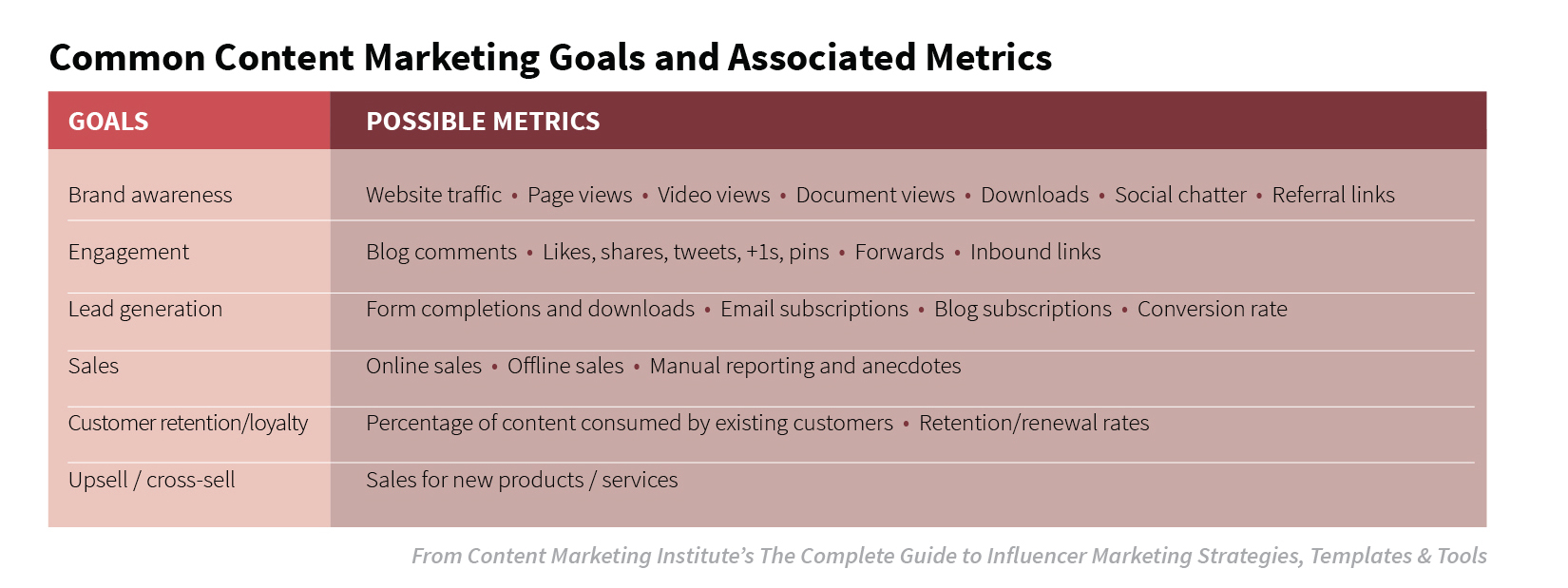
The ultimate goal is to influence your audience. Neil Patel sums it up well, saying, “Content isn’t just something to be consumed. It’s designed for action and should have intent.”
Thus, everything you produce should be backed with a goal and tied to a call to action.
Also Read: How to Set Social Media Goals in 2024?
One more thing to keep in mind here – make sure your content plan aligns with the buyer’s journey. In short, the buyer’s journey can be divided into three stages, namely:
- Awareness
- Consideration
- Decision
It makes sense to understand that a customer who is still in the awareness stage wouldn’t be interested in content that convinces him to buy as he would be in the decision-making stage. Instead, he will need at least seven interactions (hint: the rule of seven) with your brand before he is introduced to your paid services or products.
Similarly, a buyer who is considering your product will need content that explains its benefits rather than only introducing your business.
Prospects and customers in different stages of the buyer’s journey need different types of content. This is why you need to ensure that the goal of each piece of content you and your team create syncs with where the reader is in his customer’s journey.
In simple words, you will need content for each stage.
2. Create your mission statement to add direction to your work
Once your goals are in place, you will need to prepare a mission statement, too. Ideally, it will address only three main areas, as CMI outlines. These are:
- Audience: The type of people you can help most with your content is your target audience.
- Product: The information that you will offer through your content.
- Outcome: The action(s) your audience will take once it has consumed your content.
3. Research your target audience and their needs
Now that your goals and mission statement are ready let’s get you to poke and prod at your audience pool to map out a buyer’s persona.
Remember, everyone is a very broad, out-of-shape definition for an audience. Instead, go for a selected, highly targeted audience.
A good way to get a picture of your audience is to look at your analytics using one of the best analytics tools, Usermaven.
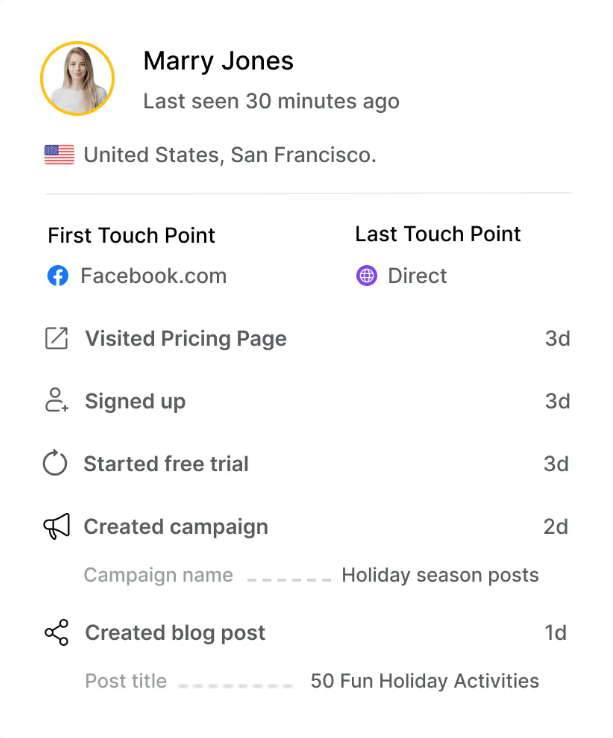
The data available here is gold because it gives you an idea of what arrests your audience’s attention. Use this information to develop content around it.
Fortunately, knowing your audience this closely allows you to pick a tone for your content and add some personality to it as well. Plus, as Dan Shewan, writing for WordStream, points out, “You can “speak” to them [your audience] more clearly and in a way that is more likely to resonate with them based on their demographic and interest profiles.”
In a nutshell, preparing such a buyer’s persona will add fire to your content marketing strategy. In sum, it will help you:
- Create content that syncs with your readers’ interests
- Plan content that adequately addresses their problem
- Prepare content in the voice and tone that will engage them
Researching this matter will also tell you the type of content your audience prefers to share, how, where, and in which format they consume it. According to Semrush’s State of Content Marketing 2023 report, 47% of the respondents attributed their success to audience research.
Let’s take a page from Kapost’s book here. Their team directly asked their audience about the following:
- The time they spend on consuming content
- Sources they trust for their content supply
- The content format they prefer to consume
This straightforward approach helped Kapost get right into the heart of the matter they were examining. They learned that their audience trusted the following sources for their content news:
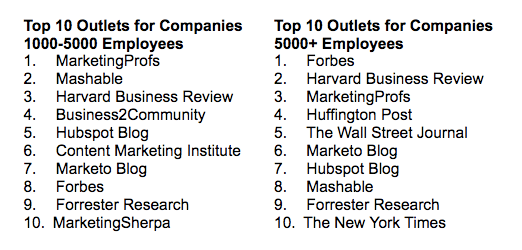
Similarly, Kapost asked their audience about the way they share their content and drafted the following results:
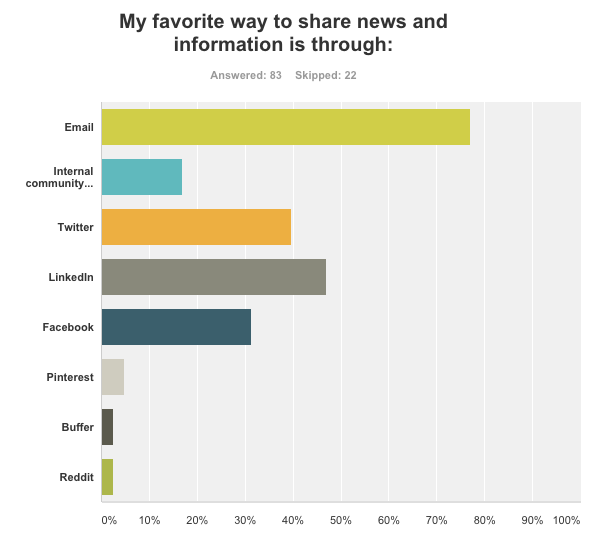
And the type of content that they prefer to share:
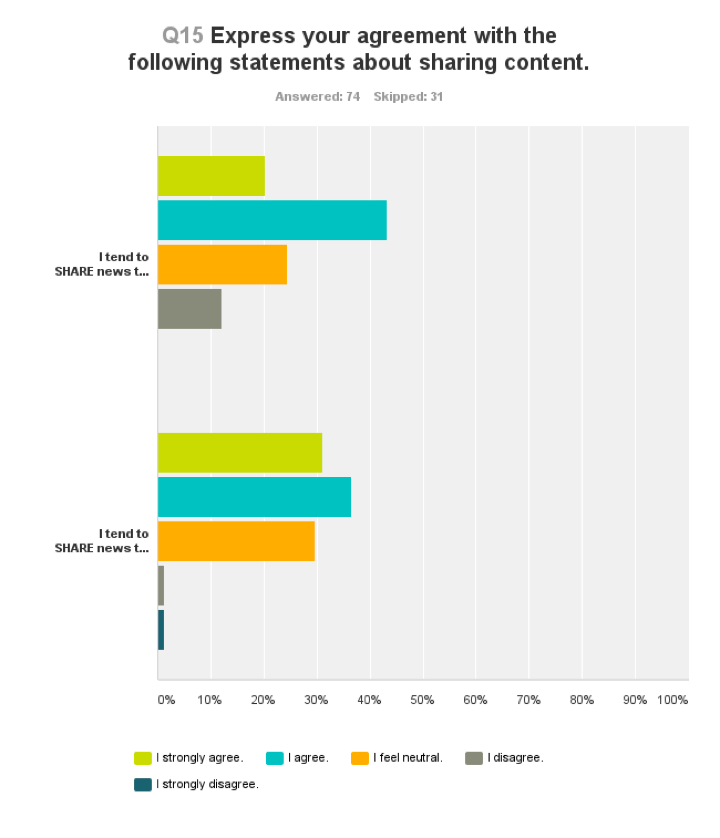
These results showed that 67% of Kapost’s audience shared content with a playful tone, whereas 63% shared factual content.
The close stat may confuse you, but a closer look will clear the picture here. Only 20% of the respondents strongly agreed that they shared data-enriched material, whereas 31% strongly agreed to share playful content.
So, the winner for Kapost is clear—playful content. Your takeaway? Prepare your buyer’s persona to learn about your audience’s preferred content type, format, personality, and more.
4. Find your audience’s pain points
Now that the buyer’s persona is crossed off your checklist let’s dive deeper into your audience’s pain points. Every pain point, problem, and question customers have is an opportunity for you. Create content around it to solve your customers’ problems and earn their trust.
With the ‘why’ addressed, let’s work our way into the ‘how-to’ part. So, how do you learn about your audience’s pain points? You’d probably have come across several pain points during your market research while preparing your buyer’s persona.
Also Read: How to leverage social media influencers to discover new audiences.
Besides, there are more ways that can help you, such as:
I. Talk to your audience: Ask your current customers about what issues hinder their progress and what could help them. For example, put up a survey in Google Forms to collect answers from your audience.
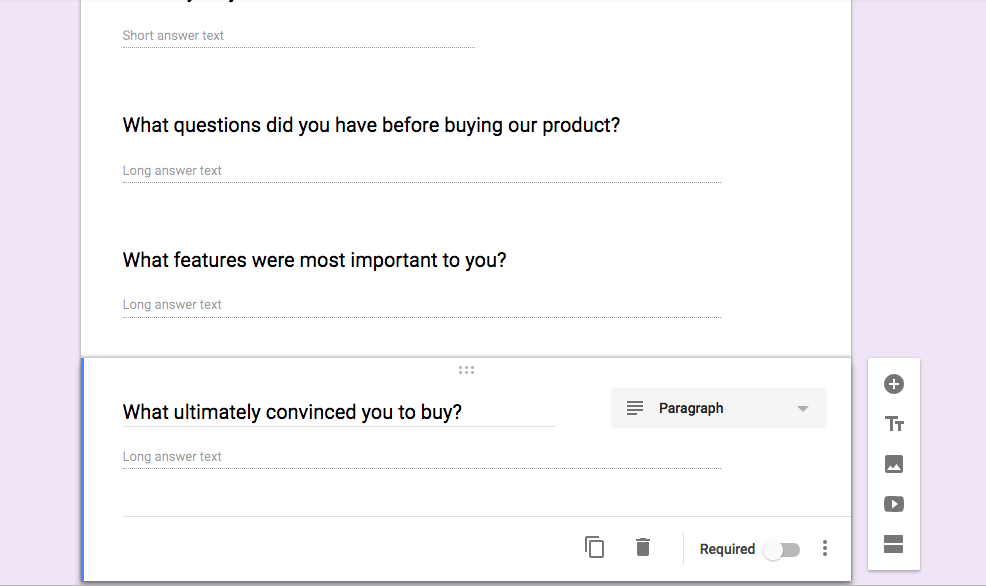
Remember that the key here is to ask the right questions.
II. Use social media: While social listening is mainly understood as keeping your ears open about what others are saying about your brand, you can also use social to listen to what problems take the central stage in your target audience’s life.
You can also connect with international audiences through an experimental event agency.
For example, an SEO agency that targets landscape businesses can tap into online social communities or track relevant hashtags to see what their audience talks about.
Or, go to platforms such as Quora and Reddit to see what questions your audience is asking or reading.
Let’s pick Quora here and type in ‘SEO’ as an example. The results here show what questions individuals have regarding the subject:
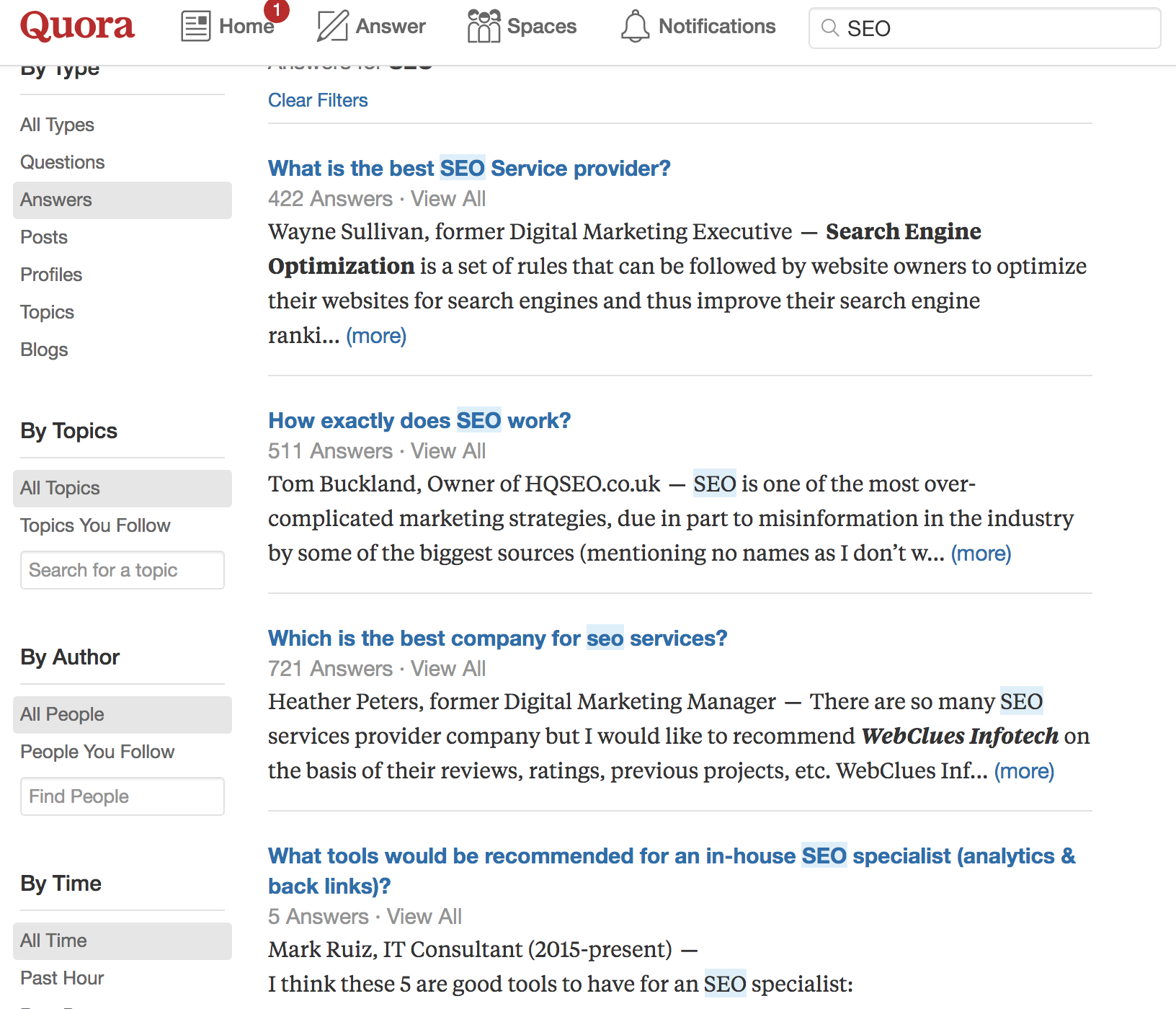
III. Run through feedback and reviews
Typically, unhappy customers share their negative experiences with 9-15 people. Some even go on to tell 20 or more folks. You can use these, as well as positive reviews, to learn about what problems customers face and what they appreciate.
Here’s what we picked up by walking through reviews on an accounting application:


5. Dig into search intent
With a list of pain points on the ready, you’re one step closer to preparing your content strategy based on the topics that will catch your audience’s attention. But first, search intent.
This search intent is the reason why users are searching for something. For instance, the intent could be informational or navigational. It could also be a purchase intent (transactional), whereby a user searches for and compares a product he wants or needs.
Here’s a breakdown:
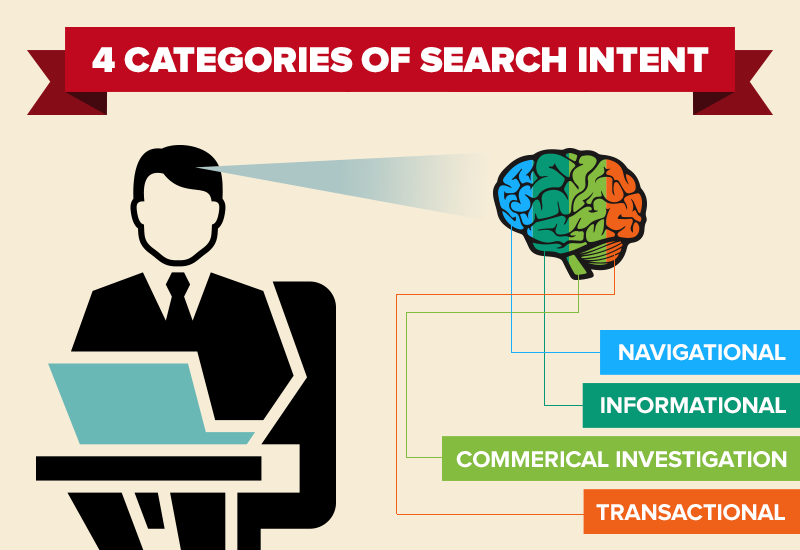
Think of it like this, what do you do when you’re looking for, let’s say, the best ice cream parlor in your town? You’ll either ask your friends, or you will take to Google and type in something along the lines of, ‘best ice cream parlor near me.’
Also Read: How Semantic Search Works?
Your search intent is clear: You want to go in and get yourself a scoop or two. Now, magnify this example to an audience of business buyers, and you’ll understand what we’re talking about when we say search intent.
In this regard, your goal is to find out why people are searching for a certain topic. What makes some topics so valuable for a business? As you answer these questions, you will not only learn more about your customers but also get an idea of what topics to cover (we’ll discuss this in detail below).
6. Monitor what your competitors are doing
While this step in chalking out your B2B content marketing strategy is self-explanatory, a key thing here is to observe balance.
You don’t want to overdo searching what your competitors are doing so much that you lose your business’s voice and message. At the same time, you don’t want to be completely alien to what is happening in your industry.
Rest assured, it is important that you keep an eye open on what your competitors are doing and what is helping them without overdoing it. Some areas to research about your competitors are:
- What type of content are they preparing?
- Where are they sharing their content?
- How do they promote their content?
- How does the audience react to the content (reactions, engagement, and follower sentiment)?
- What is their frequency of publishing content?
ContentStudio is the perfect tool to help you out at this step. It gives a complete overlook of your competitors via reports, including their top posts, audience growth, and stats with respect to each social channel.
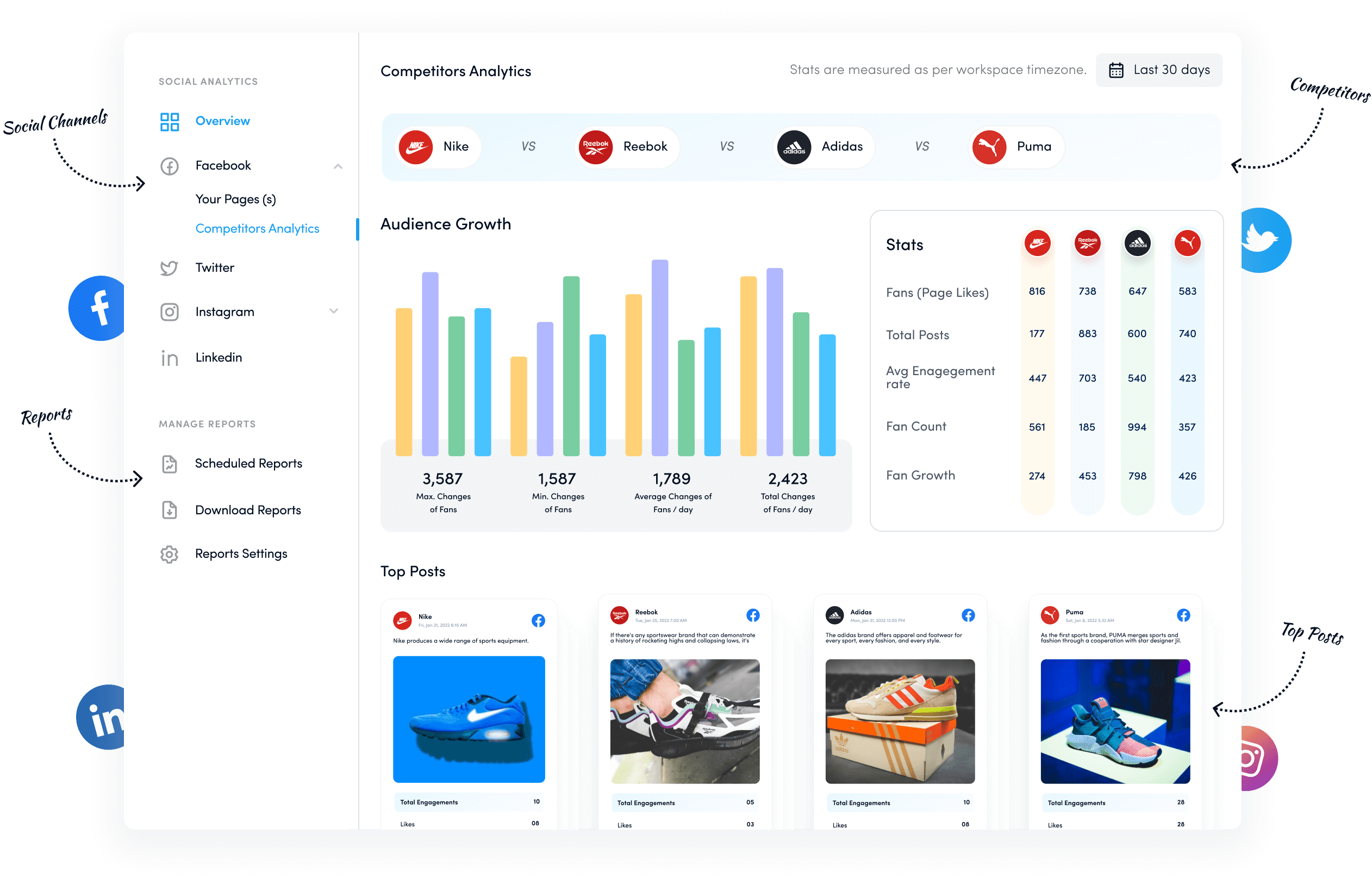
ContentStudio also gives you a curated list of topics in your industry, which helps you estimate the audience’s response to each topic:
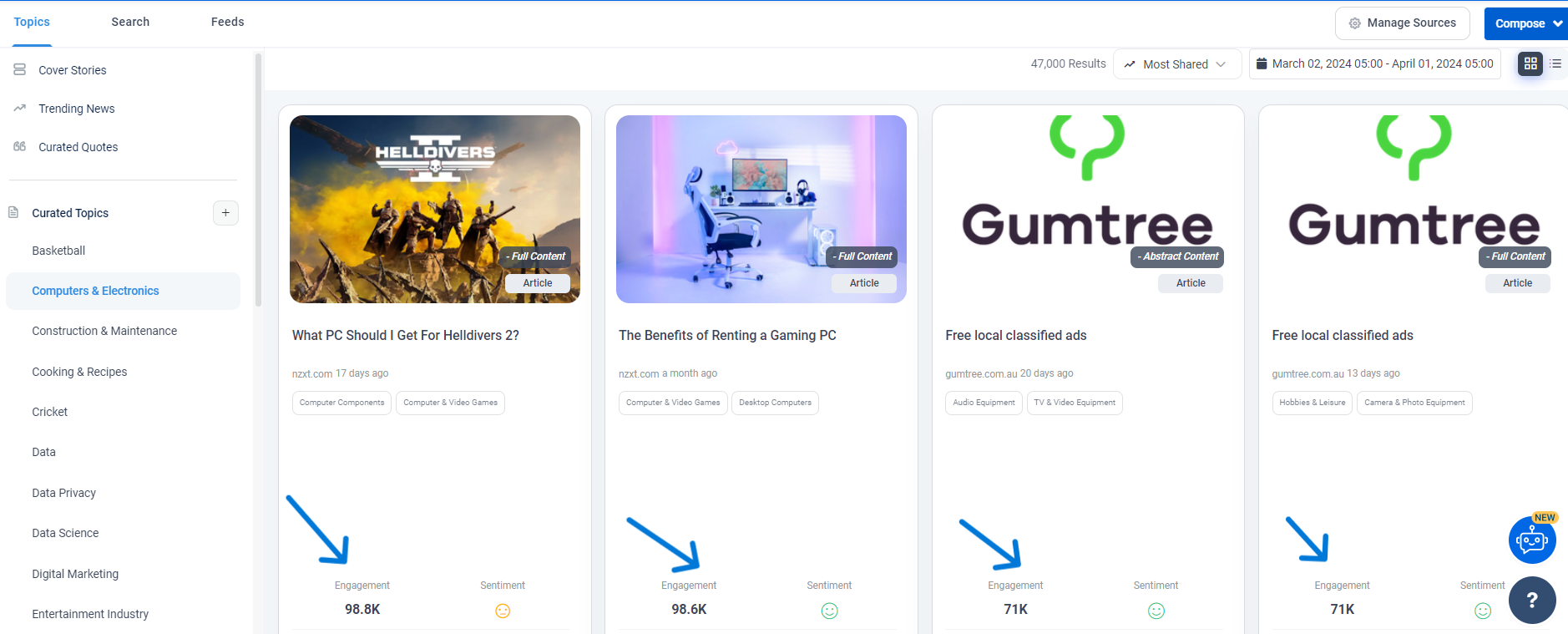
Bonus: ContentStudio has a free Instagram competitor analytics tool to stay ahead of competitors!
7. Create content for all stages of the marketing funnel
You need content to engage customers at every stage of the marketing funnel. Depending on where they are in the funnel, people will have different requirements.
- The top of the funnel (Awareness): This is where customers first become aware of your company and the goods and services it offers. The content includes podcasts, infographics, blog posts, and social media posts.
Middle of the funnel (Consideration): At this point, potential customers are beginning to consider using your product or service. MoFu content includes e-books, webinars, product feature pages, product comparisons, and live videos.
Bottom of the funnel (Decision): Here is where they ultimately select a course of action and become customers.
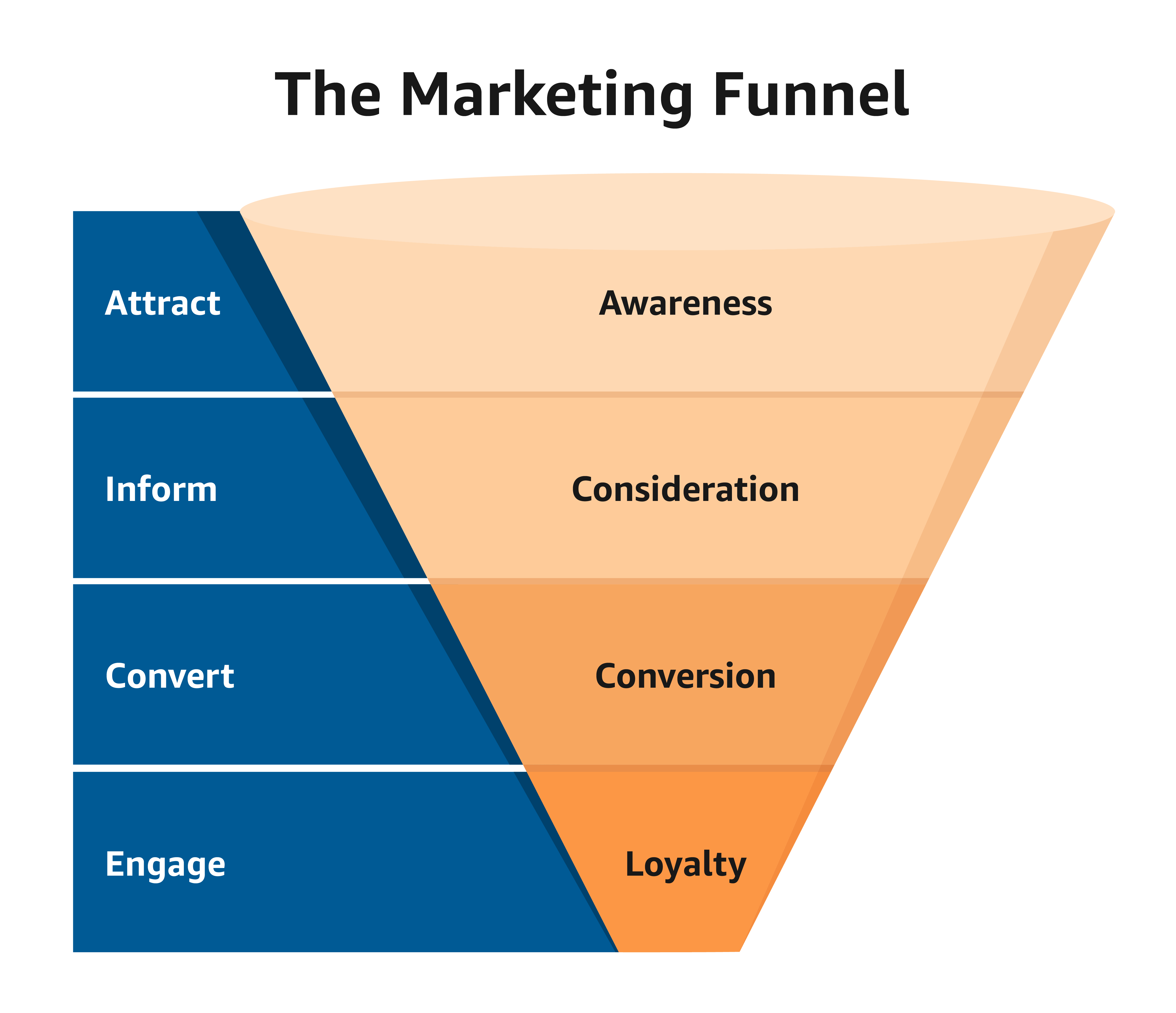
8. Work out the primary topics to cover as part of your content marketing strategy
It is best to remove the list of pain points and treat them as potential topics to cover. Also, remove a list of what keywords your competitors are targeting.
Let’s now walk you through other ways of planning content topics:
I. Research trends to prepare topics that you’d cover
Google Trends is a good place to start looking for which topic is trending and how well it has done over time.
Or, simply conduct a Google search. Look through all findings, including the news section and video corner
Here’s one example for the productivity industry:

II. Consult with the search engine as well
Now comes the part where you refer to keyword research to find out what your audience is searching for. At ContentStudio.io, we do the same. Our market research shows that our audience is interested in the following three key areas:
- Content marketing
- social media management
- Social media marketing
Consequently, our team has researched keywords related to these topics, and our content strategy covers topics based on those keywords.
III. Socially validate your topics
Another useful trick to add to your content arsenal is to use social media to gauge how well your audience responds to a topic.
Simply share something related to the topic and note how well your audience responds. Get as creative as you can here. For example, try polls to learn what your readers have to say.
A case in point is Larry Kim, CEO of MobileMonkey, who tweeted an infographic about an entrepreneur’s mind. The tweet quickly gained traction, and Larry ended up writing a blog post about the topic.

9. Prepare a channel plan to promote your content
Before you proceed any further, you also need to take into account how you would distribute your content. Without a plan over here, the content that you work so hard to produce stays backstage, having never made it to the spotlight.
A proper distribution channel can help you get eyeballs on your content. So, start by selecting social media platforms or channels where your audience is actively present and prepare a plan to promote the epic content you create.
Some questions to ask yourself as you plan to promote content on a social network are:
- What is the right tone for this platform?
- What sort of content does the audience enjoy on this network?
- What is the ideal content posting frequency?
- What are the set goals and desired actions for this social network?
10. Finalize the content format you’ll work on
Now that you have your content topics and promotion strategy in place, the last piece in the puzzle is content formats. Again, you will need to check what suits your audience’s appetite here, like Kapost did in the example above.
The top content types in the B2B marketing are:
- Blog posts: Bite-sized pieces that educate your audience on industry trends, address common pain points, or showcase your company’s expertise.
- White papers: In-depth reports that delve into complex topics, offering valuable research and insights to establish your brand as a thought leader.
- Case studies: Real-world examples of how your product or service helped other businesses achieve success, building trust and credibility.
- Podcasts: Establish yourself as an industry thought leader by sharing insights and interviews with experts in a format that’s convenient for on-the-go consumption.
- Infographics: Visually appealing summaries of data or complex information, perfect for grabbing attention and sharing key insights.
-
Ebooks: Comprehensive guides that provide a deeper understanding of a specific subject, often gated content used for lead generation.
-
Webinars: Live or pre-recorded online presentations that allow you to dive deeper into a topic, interact with your audience, and generate leads through registration.
-
Videos: Engaging and versatile, videos can explain complex topics, showcase product demos, or share customer testimonials.
-
Templates & Checklists: Provide practical tools that help potential customers solve problems or streamline their processes, showcasing your expertise and building goodwill.
-
User-Generated Content: Leverage positive customer reviews, testimonials, or social media mentions to build trust and social proof.
While you’re at it, prepare a content calendar to ensure consistency in creating, publishing, and sharing content. Such a schedule will lift your B2B content marketing strategy off the runway.
Once your content marketing strategy is finalized, it’s time to hand things over to your content creators. These could be in-house content writers already on your team or talented freelance writers you hire to bring your vision to life.
11. Measure performance
Lastly, monitor the results of your content marketing campaigns to determine their effectiveness. Try out several kinds of content and marketing techniques to find what works best. Determine which distribution channels produce high-quality leads, then concentrate your efforts there. Utilize this performance information to adjust and improve your plan of action over time.
Here’s a list of the 12 best social media analytics tools for marketers!
Wrapping it up
Content marketing can be slow in delivering results. However, it yields long-term benefits and lower up-front costs than paid search.
So, what are you waiting for? You have the blueprint for an effective B2B content marketing strategy. Now you are all set to go.
FAQs
What is a B2B marketing strategy?
For a B2B content strategy, the content aims to target your audience of businesses rather than customers, as observed in a B2C strategy.
Recommended for you
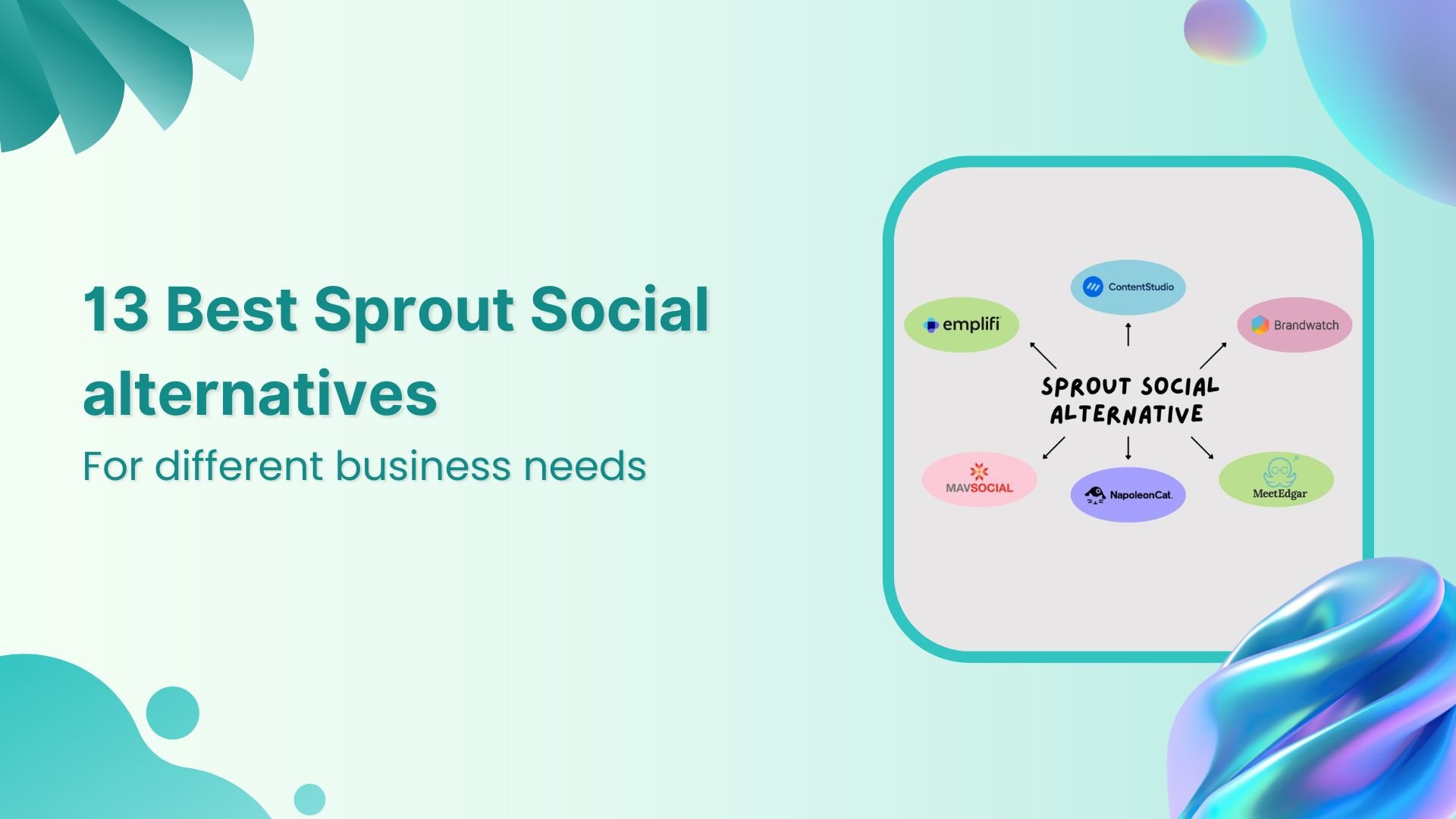
13 Best Sprout Social alternatives for effective social media management

150+ Black Friday quotes, hashtags, and slogans to boost sales
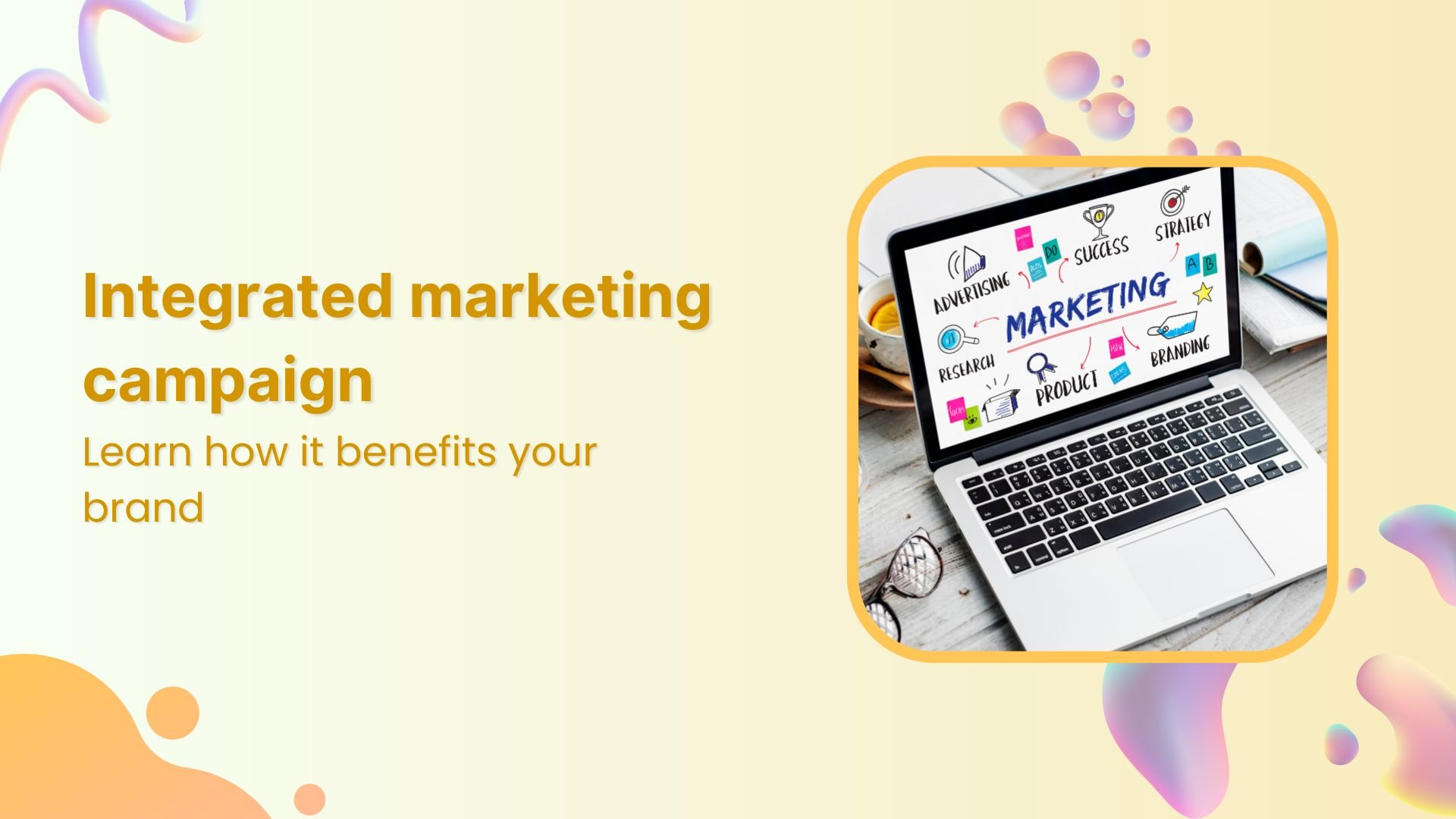
Why is an integrated marketing campaign beneficial for your brand?


Powerful social media management software
14-day free trial - No credit card required.
